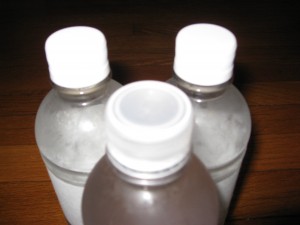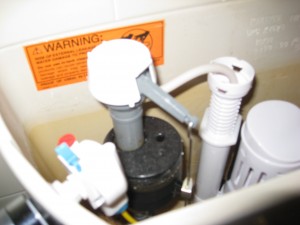 On October 25, Cambridge is switching to single-stream recycling. Also called zero-sort recycling, this method allows residents to throw all recyclables into one bin, rather than separating paper and cardboard from plastic, glass, and metal. It’s a method that’s already been adopted by many urban areas worldwide, with great results. To find out more about it, I talked to Randi Mail, recycling director for the City of Cambridge.
On October 25, Cambridge is switching to single-stream recycling. Also called zero-sort recycling, this method allows residents to throw all recyclables into one bin, rather than separating paper and cardboard from plastic, glass, and metal. It’s a method that’s already been adopted by many urban areas worldwide, with great results. To find out more about it, I talked to Randi Mail, recycling director for the City of Cambridge.
What are the benefits of single-stream recycling?
Single-stream means that residents can mix clean bottles and cans, paper, and cardboard together in the same bin, so people don’t have to sort recycling anymore. Across the country, communities have seen that when you don’t require sorting, you get a lot more participation. It makes it easier for people. We’re also switching to a different type of truck that can take any size cardboard, so people won’t have to cut their cardboard or flatten it down to three feet by three feet, which is a huge reason why a lot of cardboard in Cambridge doesn’t make it into the recycling truck.
There are also going to be new materials that are going to be accepted as part of the single-stream program: empty pizza boxes; big plastic items like laundry baskets, buckets, plastic toys; spiral cans like those that potato chips, coffee, or nuts come in; and empty paper coffee cups.
The city is going to be providing large recycling toters on wheels to all residences. Providing a bigger container also increases the amount recycled. Sometimes when people’s bins fill up, the rest goes in the trash. So the bigger the bin, the more recycling we’ll get. The toters are easier to move to the curbs; they don’t require lifting. I think the sidewalks are going to be clearer, and the trucks themselves will be safer because they’re going to empty those toters into the back of the truck, rather than over the top. There are a lot of different benefits, from minimizing the trash to cleaning up the streets and just making it easier for people to participate.
How much do you expect recycling to increase?
Cambridge has a pretty high recycling rate already, at about 35%. That includes yard waste, electronics, and food waste that we collect through our composting program. We are expecting between a 10% and 25% increase in recycling tons. We’ve worked with the state to project what the increase will be, and they believe that we’re going to see a 25% increase. We hope to see at least 10%. If we achieve more than that, it will be fantastic.
Have other towns seen increased recycling rates?
Yes. The City of Boston has switched neighborhood by neighborhood—they’ve just finished up—and they are looking at almost doubling their recycling rate across town. Communities in Massachusetts and across the country, like Newton and Worcester, Everett and Chelsea, Quincy and Framingham, every one is seeing a huge increase. You definitely see more when you give out the large toters; some communities have not given those out and they don’t see as big of a jump.
Do you think contamination is going to rise with single-stream recycling?
As always, bottles and cans must be emptied and rinsed out. No food waste is accepted. As long as people are recycling correctly, there shouldn’t be any increase in contamination. It’s not acceptable now, and it’s not going to be acceptable in the single-stream program. If recycling bins have trash, food waste, or other unacceptable items, drivers have the ability to reject them by leaving an orange sitcker. We try to be proactive about educating residents when they’re not recycling properly, to make sure they know what to do right the next week.
Cambridge recycling is pretty clean overall. Our processor is Casella Recycling, they’re based in Charlestown, and they consistently report to us that we have no more than 3% contamination, which is very low, and they’re able to handle that. They’ve told us that we’re probably the cleanest load in the Boston area, and they take from about 50 communities.
Clean recycling is important because the material is marketed to companies that use new products. Good education and immediate feedback to the residents is key. Casella won’t accept loads with more than 7% contamination, that’s part of our contract, and our drivers don’t want to get their trucks rejected, because that causes problems and delays.
The first quality check is the education of residents, because if people know what to recycle, they’re not going to put the wrong stuff in the bins. The second check is when the drivers can reject the bins. And then the third check is at the recycling facility, where there’s sorting going on with different technologies and people. They’re sorting that material and selling it back to markets, so contamination isn’t acceptable. They’ll remove that stuff, whether it’s trash or dirty recycling.
How much is this whole process costing the city?
We’re looking at about $700,000 to purchase toters for 1-5 unit buildings, and the recycling collection contract is increasing a little bit, but really it’s going to present a savings to the city overall, because the more that we recycle, the more the city saves. There’s about a $60 difference between the cost to throw a ton of waste out versus the cost to recycle a ton, so with an increase in recycling we’re going to see disposal savings.
How long will it be until the savings makes up for the outlay?
A few years, definitely, but long term, the city is committed to recycling. And overall, especially with the new vehicles, I think it’s going to make things a lot easier for residents. There are different ways to try to increase recycling, and we’ve decided that single-stream is going to be the one way that we definitely can do. Other communities have implemented pay-as-you-throw systems, where residents pay for each bag of trash that they throw out. That really hasn’t been a program that the city has been able to consider seriously. It’s difficult to implement with so many multi-family units, and I don’t think there’s the political will for that kind of program. By making recycling easier and providing bigger containers, I think we’re going to see the kind of jump in participation that we’re looking for.
What’s happening to the old bins?
People can continue to use the bins inside their houses if they want to fill them up and then empty them in the toters, which would be kept outside. If not, we’re going to be collecting bins at the curb the day after collection through November. There may be broken bins that we recycle, but the other ones we’ll clean, and those will be available to people who are going to continue to use bins.
There are basically three options for recycling come October 25. We’re going to be providing toters to residents. If they feel that they don’t need them or can’t fit them on their property, they have other options. People can convert a trash can for recycling, and we have stickers that people can put on their cans similar to the yard waste program. And the third option, which is really the last resort, is continuing using the small bins.
There are two sizes of toters. Single-family homes are going to get one small, 65-gallon toter. That’s the equivalent of 3 ½ bins. Two-family homes are going to get two small toters, and three- to five-unit buildings are going to get two large toters. Those are 95 gallons, and they can fit the equivalent of over 5 bins. The amount of recycling that we see out of households is definitely going to increase because cardboard’s going to be much easier, and we’re taking those large plastics, so they’re going to take up more space.
If people want to change the size of their toter, they need to contact us by September 1 at recycle@cambridgema.gov or 617-349-4815, when we’re going to be putting the order in. We’ve heard from almost 400 households who want to go bigger, go smaller, or share a bin with a neighbor.
Cross-posted on pragmaticenvironmentalism.com





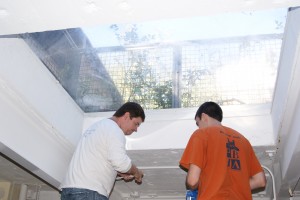

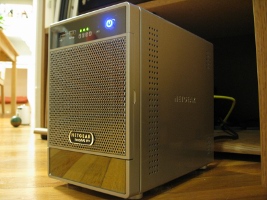
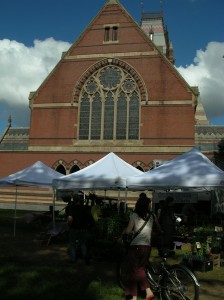
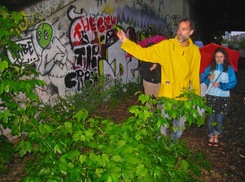 Last week we went on an
Last week we went on an 